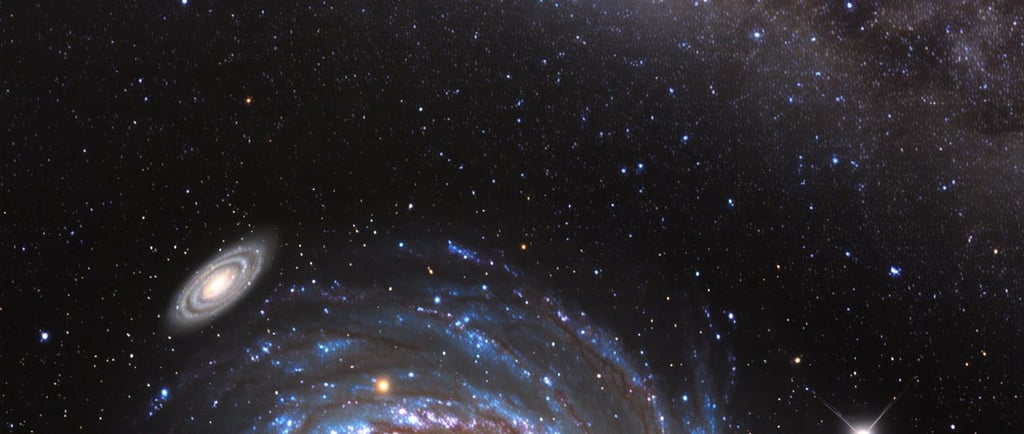Caldwell 30: Our Milky Way's Twin


Introduction to Caldwell 30
Caldwell 30, also known as NGC 7331, has often attracted the attention of astronomers for its striking resemblance to our own Milky Way Galaxy. The similarities in size, shape, and mass make it a fascinating subject for study and observation. This galaxy provides a unique opportunity to delve into the dynamics of spiral galaxies and to gain insights into the processes that might also be occurring in our galactic home.
The Visual Splendor of Caldwell 30
One of the distinctive characteristics of Caldwell 30 is its starry disk, which is inclined towards our line of sight. This inclination allows telescopic images to reveal a deep and textured view of the galaxy. Using advanced telescopes, such as those equipped with Hubble's wide field camera 3, astronomers have captured breathtaking close-ups that display Caldwell 30's magnificent spiral arms. In these images, dark, obscuring lanes of dust weave through the bright bluish clusters of massive young stars. This stunning contrast illustrates the robust and dynamic nature of stellar formation within the galaxy, as well as the areas where new stars are being born.
Insights into Stellar Populations
The examination of Caldwell 30 continues to reveal critical aspects concerning stellar populations. The bright, yellowish regions at the center of the galaxy comprise older, cooler stars. This central bulge is a hallmark of many spiral galaxies and offers a captivating juxtaposition against the vividness of the young star clusters located within the arms. Observations indicate that these central regions play a vital role in galaxy evolution, harboring remnants of earlier stellar generations while simultaneously being surrounded by active star-forming regions.
Given its characteristics, Caldwell 30 serves as an analog to our Milky Way, allowing astronomers to model and understand the processes that may also govern our own galaxy. As we continue to explore Caldwell 30 through various wavelengths, we gain not just a closer look at this stunning galaxy but also a better comprehension of the intricate workings of galaxies at large. The ongoing studies and observations of this galactic counterpart pave the way for advances in our understanding of cosmic evolution.
